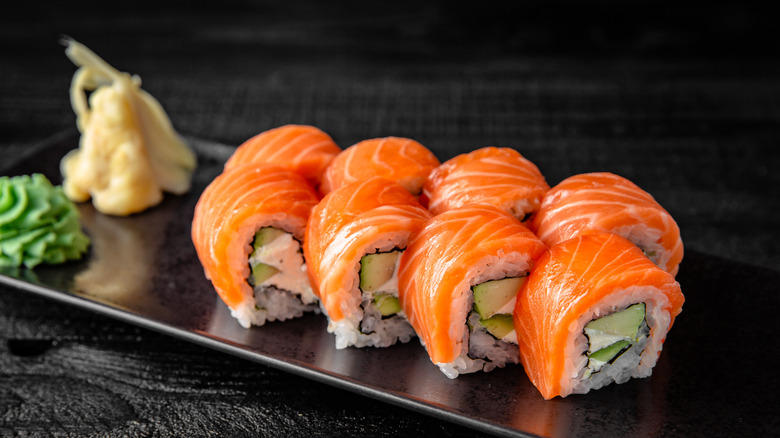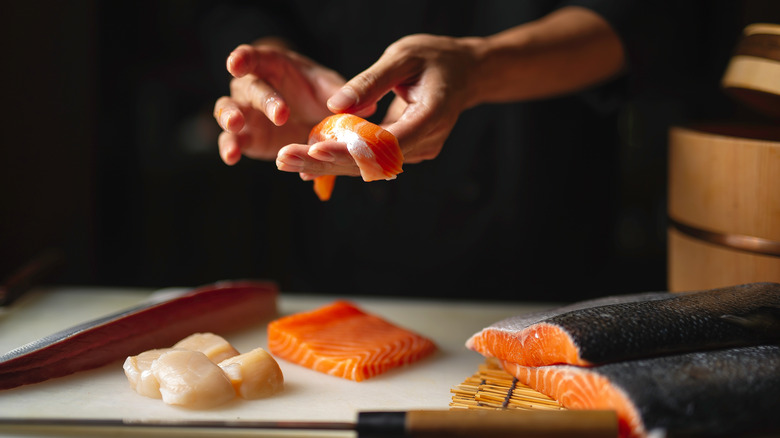The Reason So Much Japanese Sushi Contains Salmon From Norway
These days, salmon appears on most sushi restaurants' menus, but there was a time not so long ago when raw salmon was not eaten in Japan. As Mental Floss explains, salmon caught in the Pacific Ocean was formerly known to contain parasites, which meant that it was not a safe or appealing fish for Japanese sushi, sashimi, or other raw fish dishes.
Norway, on the other hand, found itself with an excess of parasite-free Atlantic salmon. With more supply than demand, the country needed to find a way to sell all the salmon it was catching. In the mid-1980s, Norway turned to Japan, a nation known for paying for and consuming fish with enthusiasm, assuming it would be easy to offload its salmon to Japan. In reality, though, getting the Japanese to trust and appreciate Atlantic salmon from Norway was a difficult feat: It would take nearly 10 years for the Norwegians to convince the Japanese to embrace salmon sushi.
How Norway convinced Japan to try its salmon
In the 1980s, Norway sent a man by the name of Bjorn Eirik Olsen to sell Atlantic salmon to Japan to fish industry executives — a tall order at the time. Jess Jiang of NPR explains that the difficulty was due to the fact that "people in Japan thought it was gross." Because they were accustomed to parasite-containing Pacific salmon, they only ate the fish cooked and could not imagine enjoying a salmon sushi roll.
Years passed, and Norway was desperate to sell its fish. Olsen's big break came with the help of Nishi Rei, a huge corporation selling all kinds of frozen food. Olsen told the company that he would sell them a massive amount of salmon for cheap to be made into affordable grocery store sushi. When Nishi Rei agreed, Olsen said "there was a feeling of making history." By 1995, reports Mental Floss, raw salmon had finally become more common in Japan, appreciated for its mild and buttery flavor. It was sold in stores and restaurants, and it even got its own plastic version displayed in store windows. When Olsen saw those plastic salmon figures, he realized, "This is really a breakthrough."

